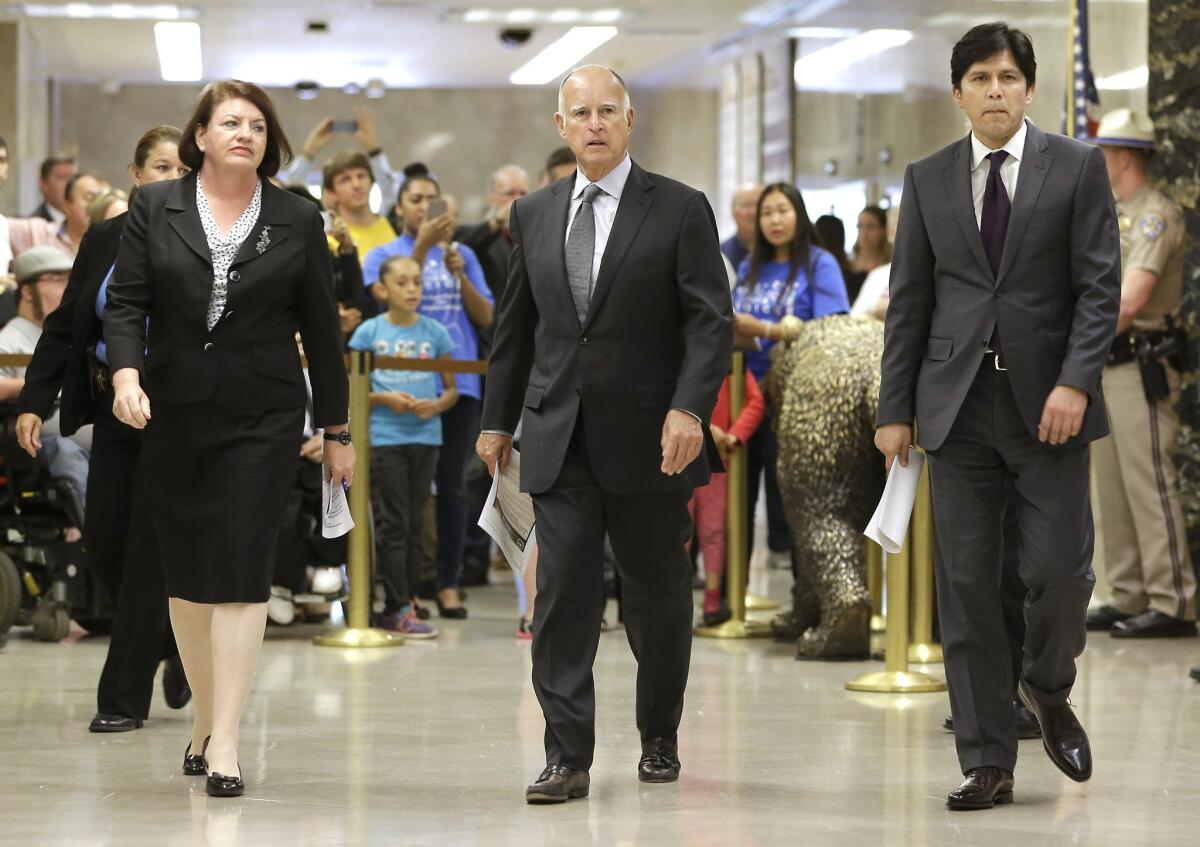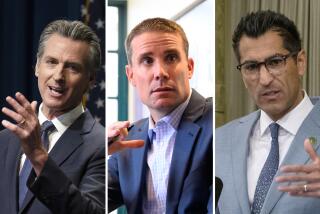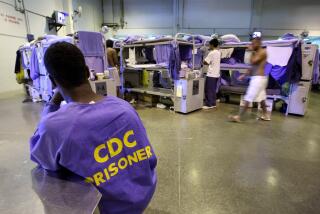Gov. Jerry Brown signs new $167.6-billion state budget

Gov. Jerry Brown, center, is flanked by Assembly Speaker Toni Atkins (D-San Diego) and Senate leader Kevin de Leon (D-Los Angeles) as they walk to a news conference last week in the Capitol to announce a budget agreement.
- Share via
Reporting from Sacramento — Gov. Jerry Brown signed a new $167.6-billion budget Wednesday that expands child care, boosts funding for public schools and opens the state’s public healthcare program to children in the country illegally, but leaves some key issues unresolved.
The new spending plan includes a $115.4-billion general fund and takes effect July 1. It is a compromise between Brown and Democratic lawmakers, who were able to secure increased funds for some government services, though not as much as they wanted.
“The governor’s signature is the next step for a prudent and progressive budget that will make California a better place to live, work and play,” Assembly Speaker Toni Atkins (D-San Diego) said in a statement.
As part of the agreement, an estimated 170,000 immigrants 18 or younger could qualify for Medi-Cal, the state’s public healthcare program, for the first time. The expansion is scheduled to begin in May and is expected to cost $132 million annually.
“For a relatively small investment, every child in every California classroom and playground will now have access to care and coverage,” Anthony Wright, executive director of the advocacy organization Health Access California, said in a statement. “We all benefit from that.”
The budget also includes a $380-million earned income tax credit, which could be used by an estimated 825,000 poor families to keep more of their paychecks.
The average qualifying household is expected to gain $460 a year. The maximum credit, for families with three or more children, is $2,653.
When signing the budget, Brown used his veto power sparingly, trimming $1.3 million, mostly by eliminating $1 million intended to help improve the water quality in Lake County’s Clear Lake. Brown directed administration officials to find other sources of funding for the work.
In addition, Brown cut money for a forest advisory council and for buying mapping software, deeming it duplicative or unnecessary.
More spending decisions still need to be made.
The budget does not include a plan for using hundreds of millions of dollars generated by California’s cap-and-trade program, which charges fees to polluters. The money is required by law to help reduce greenhouse gas emissions, and lawmakers have competing ideas for how to spend it.
By calling special legislative sessions, Brown also has directed lawmakers to find sustainable funding for transportation and public healthcare. California’s roads have suffered from overdue repair work and a consensus has not been reached on how to cover the cost.
Lawmakers are also interested in boosting spending on services for the developmentally disabled and low-income Californians, items that were jettisoned from the budget during negotiations with the governor.
Both special sessions have raised the possibility of higher taxes and fees to pay for more spending. Although Brown pledged to seek voter approval for new taxes while running for governor in 2010, he said that promise doesn’t apply since winning reelection last year.
“When I ran the second time, I didn’t say that,” Brown said last week when he announced the budget deal.
Brown has more work to do on long-term financial issues, such as figuring out how to pay for healthcare for retired state workers. The cost is estimated at $71.8 billion more than officials have set aside, making it one of the biggest drags on California finances.
Administration officials have been negotiating with unions to develop a plan that would require workers and the state to set aside more money to cover the bills.
So far no agreements have been reached, and no additional money for the purpose was included in the budget.
“We knew that bargaining was going to be a complicated, time-consuming task,” said Michael Cohen, Brown’s finance director.
Follow @chrismegerian for more updates from Sacramento.
More to Read
Sign up for Essential California
The most important California stories and recommendations in your inbox every morning.
You may occasionally receive promotional content from the Los Angeles Times.











